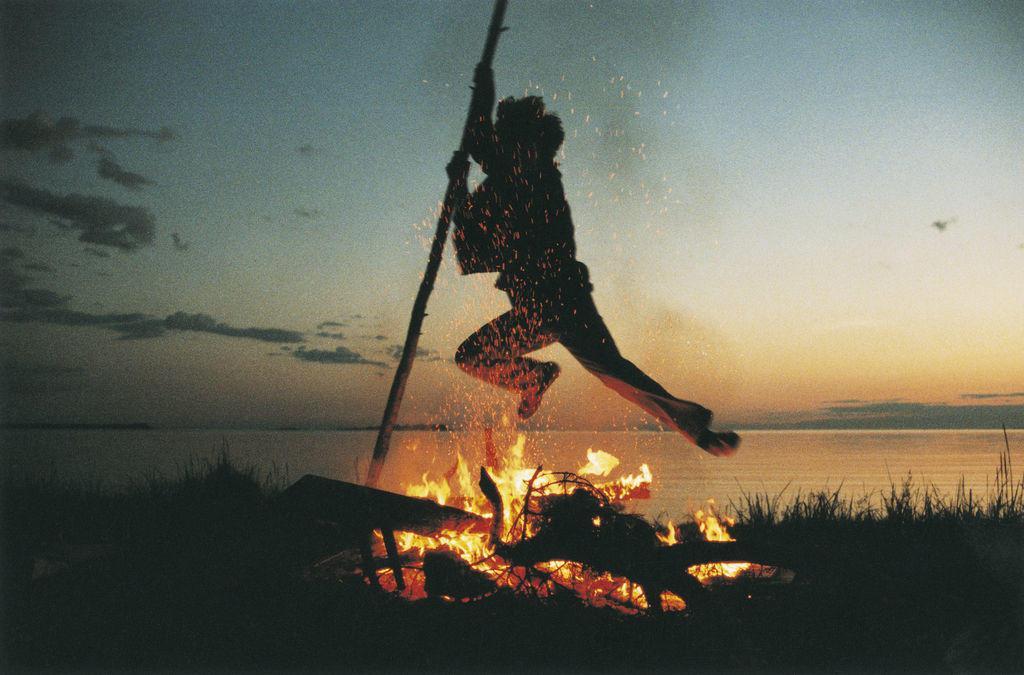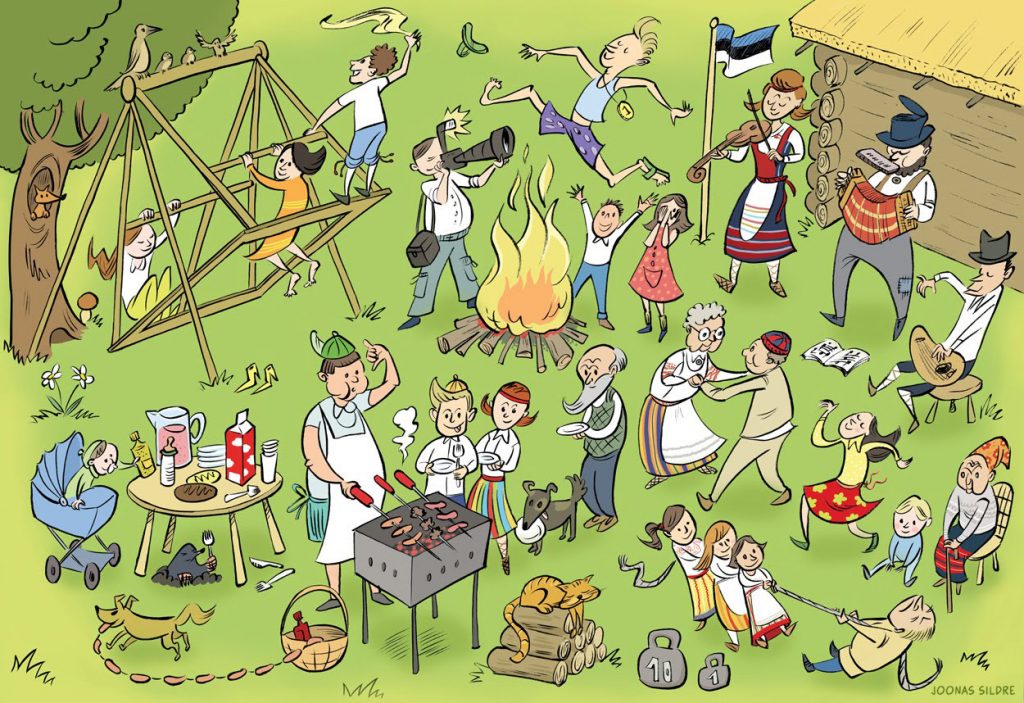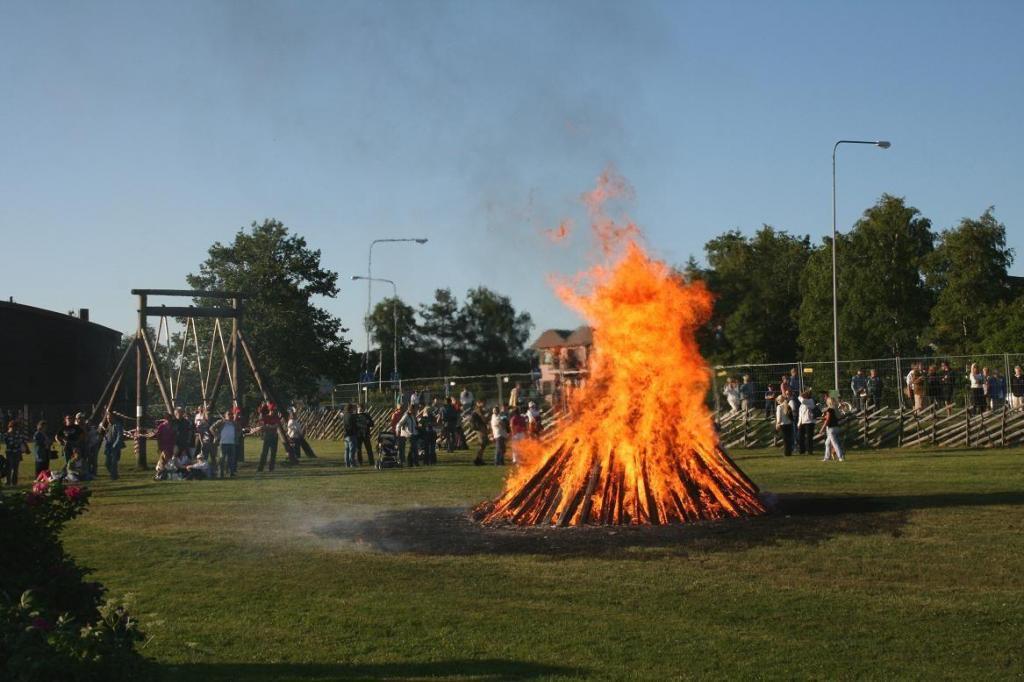From dodging meteorite strikes on Saaremaa to defying Soviet rule, Adam Rang explains why midsummer’s night or Jaanilaupäev (literally, Midsummer Eve) reflects the complicated story of the Estonian people over thousands of years.*
A friend from England recently asked a seemingly simple question: Why do Estonians celebrate midsummer two days later than the actual midsummer?
21 June is often said to be the day of the summer solstice, the astronomical midpoint of summer. That is the day people still gather at places like Stonehenge in the UK to celebrate the longest day of the year. Yet Estonians celebrate midsummer’s night known as Jaanilaupäev on 23 June and Midsummer Day, or Jaanipäev, on 24 June, which is commonly said here to be the shortest night of the year.
Both cannot be true. In fact, this year both are wrong.
The answer to my friend’s question is not simple. In fact, it raises even more fascinating questions along the way about how midsummer began as a celebration of our planet’s movement through space, yet evolved down here on Earth as a reflection of our complicated history along the way.
What is the summer solstice?
Let us start by clarifying when the actual astronomical midsummer takes place. That is the exact moment the Earth’s axis is most directly tilted towards the sun. The day closest to that moment is the longest day and the night closest to that is the shortest night.
The whole planet experiences this at the same moment, of course, although across different time zones and two different days. One half experiences the summer solstice while the other half experiences the winter solstice. By the way, it’s that angle of the tilt that primarily creates our hot and cold seasons because it affects how much of the atmosphere the sun’s rays have to travel through – not, as sometimes thought, because the Earth is ever so slightly tilted closer to the sun.
There is no alignment between how long it takes the Earth to spin on its axis and how long it takes it to complete an orbit of our sun. That makes it a bit tricky for us here on Earth to create calendars that are neatly based on days and years.

For most people in most years, though, the solstice takes place on what we call 21 June and that is the longest day. As a result, it is often assumed that is always the case.
In fact, the solstice took place this year on 21 June only to the east of the Baltic sea, like here in Estonia. That is because it happened just after midnight Estonian time so every country west of us had their solstice the previous day on 20 June instead.
Here’s where things get even more confusing. “Midnight” is not halfway between sunset and sunrise so it is not technically the middle of the night astronomically. So, this year in Estonia, the closest astronomical day to the solstice is not the same as the calendar day on which it takes place.
If you are still confused, do not worry, because midsummer is fundamentally a cultural celebration to roughly mark the changing of the seasons, which has historically been very important for those working on the land.
How the summer solstice became Jaanipäev
But why do Estonians mark Jaanilaupäev on 23 June and Jaanipäev on 24 June? In fact, why do we even call it Jaanipäev?
The annual solstices were originally celebrated through Paganism across Europe, but Paganism was largely replaced by Christianity. Instead of abolishing Pagan traditions, many of them were simply adapted and given new meaning.

The winter solstice was merged into a celebration of Jesus’s birth and became Christmas, while the summer solstice was merged into St John’s Day. Here, too, in Estonia, the name of the midsummer celebration became Jaanipäev, which literally means St John’s Day. That name has remained to this day, even though many of us do not know who St John was. In case you are wondering, he was the John who baptised Jesus.
One key difference with Christian saints’ days is that they are fixed to calendar dates. So the midsummer celebration, which became St John’s Day, was then fixed to 24 June (with the main celebration taking place on its eve). Although the exact day varied by year, this chosen date was not as inaccurate at the time though. As mentioned, creating accurate calendars with days and years is tricky on Earth because they drift out of sync. The most notable attempt to correct this was when Europe moved from the Julian to the Gregorian system, although this happened quite chaotically over many centuries and at different speeds. The challenge of European integration is not a new thing.
The misalignment of the solstice and the Christianised festival of Midsummer is not an additional part of the conspiracy to detach us from our roots, which is a theory that I’ve occasionally heard repeated. It just drifted out of sync because of the limits of our calendars and our attempts to fix them.
St John’s Day was once a major festival across the Christian world, although it is waned quite a bit, especially in relation to Christmas. To this day, millions of people around the world now put up Christmas trees without realising they are continuing a pagan tradition that began here in Estonia and Latvia. The very first public “Christmas tree” was put up in Tallinn by Hanseatic traders who adapted the tradition from locals they saw ceremoniously burning a spruce tree at the end of the winter festival. By the way, ask a Latvian and they will say this happened first in Riga where they even have a plaque and a monument to the first Christmas tree. This has been the source of some well spirited rivalry between our respective tourist boards.
In our part of the world though, Estonians and other peoples have stubbornly stuck to their prehistoric cultural traditions against centuries of attempts to change us. Being stubborn can be a good thing. Estonia is often said to be one of the least religious countries in the world, although this is not really true. The reality is, many Estonians have religious-style spiritual beliefs that include either old pagan beliefs or modern esotericism. They are just not as organised about it.

For us, midsummer is still the biggest celebration of the year in Estonia and it’s still commonly celebrated the same way as in ancient times – with family and friends around bonfires in the countryside with plenty of pagan traditions incorporated. It bears little resemblance to the movie “Midsommar”, as our own American guests discovered to their relief last year. There is usually a sauna, as well as plenty of singing and dancing, washed down with a few ales.
That gives me an opportunity to share a fun fact. “Sauna” and “ale” are two words in English that enjoy the rare characteristic of sharing the same root as the Estonian word. Sauna is recently borrowed from Finnish, so it has the same Finno-Ugric root as saun in Estonian, while ale is a very old English word from the old Norse word øl that also produces õlu in Estonian, as well as similar words in almost all Nordic and Baltic languages. My personal goal is to get leil into English too, but that is another story.

Ancient celebrations as far as Britain may have been remarkably similar to ours today.
The oldest sauna ever discovered by archaeologists was in England, very close to Stonehenge and dated to 3,500 BC. No one knows what Stonehenge was used for back then, but it was built in alignment with both the summer and winter solstice, which is why people still gather there for midsummer today.
In fact, it is possible that ancient peoples across Europe were marking something that happened in Estonia, according to a theory proposed by Lennart Meri, the late Estonian president. Meri was a historian who specialised in Finno-Ugric culture, although most people know him best as the first president of Estonia after our independence was restored.
Meri suggested that our midsummer celebrations around fire are based on re-enacting a series of meteorite strikes on Saaremaa island around the village of Kaali. That was one of the most significant meteorite strikes in human history because it was a large impact that happened while people were living here and therefore formed the basis for a lot of early Finno-Ugric and Baltic mythology. Saaremaa may even have been the legendary Thule island described by the ancient Greeks where the sun went to rest. It is perhaps not a coincidence that tuli means “fire” in Estonian.

Perhaps we should add “the birthplace of midsummer” to our national marketing campaigns, alongside things like Skype and e-residency. I am only half joking. Afterall, visitors can go see those incredible meteorite craters for themselves.
Another Jaanipäev tradition still popular with young couples is to go searching for the fern blossom because ferns only blossom on this one night. Allegedly. “Fern blossom” is sõnajalaõis in Estonian and was voted by Estonians to be the most Estonian word ever.
There is one tiny detail about fern blossoms that might change your perspective about the Estonian love of fern blossoms. Ferns do not actually blossom, according to botanists. Sometimes, though, the journey is more important than the destination. If you are wondering what all those young couples have been doing in the forest on this night for thousands of years then all I can say is that “searching for the fern blossom” is a bit like an ancient version of “netflix and chill”.

A national celebration
Estonians finally took control of their territory in 1918 when the Republic of Estonia was founded and could therefore fix the date themselves as a national celebration. For example, Sweden chose to fix the date to the nearest Friday and Finland chose to fix the date to the nearest Saturday. If you live on a Swedish-Finnish border town, then that weekend is one hell of a party.
However, Estonians soon had another important date to merge the midsummer celebration with, which is not religious but is just as sacred. On 23 June 1919, Estonians and Latvians won a key battle during their Wars of Independence, which eventually led to both countries securing their existence as republics. As a result, 23 June became Victory Day in Estonia and therefore a two-day holiday with midsummer’s night in-between and celebratory events intertwined.

That also means that 23 and 24 June are Estonia’s only two consecutive flag days (when everyone is required to raise the Estonian flag on their home) and so the only time we leave our flags up overnight – if you can call it that. Technically, we do have a sunset and sunrise on this night as the sun briefly dips below the horizon, but poetically we consider this to be the one night in which sunrise and sunset meet each other as it is also the middle of white night season. At other times, only state buildings can leave flags up overnight and only if they are illuminated.
During the later Soviet occupation, this patriotic aspect of midsummer took on even more important significance. Midsummer was not just a celebration of our own culture as a people, but also our independence as a republic that would eventually be restored. It was a beautiful act of both stubbornness and defiance.
Back to the question
All this brings me back to the present day and my friend’s question: Why do Estonians celebrate midsummer two days later than the actual midsummer?
In places like the UK, modern observers of the solstice are attempting to revive the tradition based on its pagan roots while skipping the complicated parts of our story that came after that. Even here in the Baltic states, there are people with stronger pagan beliefs who prefer to mark the astronomical midpoint, too.
Midsummer may have begun as a way to mark our place in space, but life down here on Earth is a bit more complicated. Despite the name, Jaanipäev has mostly stayed true to its roots, but also reflects our history as a cultural, spiritual, religious and even a nationalist celebration all at the same time.

That is the story of the Estonian people and the fact that people can still celebrate it is pretty special. The timing may be a little off, but what matters now is that we all come together to freely celebrate who we are – even though this year will be particularly unusual due to the pandemic.
But wherever you are on this complicated little planet and however you choose to celebrate, head Jaanipäeva / happy midsummer.
Read also: Estonian beliefs and rituals carried on by Jaanipäev and Fire, flower crowns and fern blossoms: Midsummer night in Estonia explained
* This article was originally published on 23 June 2020.

